
Buccaneers were a kind of privateers or free sailors peculiar to the Caribbean Sea during the 17th and 18th centuries. First established on northern Hispaniola as early as 1625, their heyday was from the Restoration in 1660 until about 1688, during a time when governments were not strong enough and did not consistently attempt to suppress them.

The Second Anglo-Dutch War or the Second Dutch War was a conflict between England and the Dutch Republic partly for control over the seas and trade routes, where England tried to end the Dutch domination of world trade during a period of intense European commercial rivalry, but also as a result of political tensions. After initial English successes, the war ended in a Dutch victory. It was the second of a series of naval wars fought between the English and the Dutch in the 17th and 18th centuries.
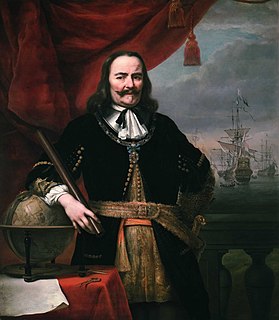
Michiel Adriaenszoon de Ruyter was a Dutch admiral. Widely celebrated and regarded as one of the most skilled admirals in history, De Ruyter is arguably most famous for his achievements with the Dutch Navy during the Anglo-Dutch Wars. He fought the English and French forces and scored several critical victories, with the Raid on the Medway being the most famous among them.
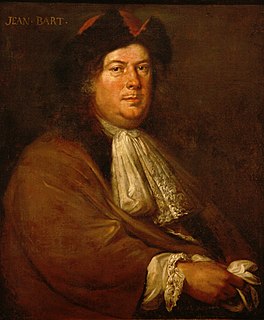
Jean Bart was a French naval commander and privateer.

The Nine Years' War (1688–1697), often called the War of the Grand Alliance or the War of the League of Augsburg, was a conflict between France and a European coalition which mainly included the Holy Roman Empire, the Dutch Republic, England, Spain, Savoy and Portugal. It was fought in Europe and the surrounding seas, in North America, and in India. It is sometimes considered the first global war. The conflict encompassed the Williamite war in Ireland and Jacobite risings in Scotland, where William III and James II struggled for control of England and Ireland, and a campaign in colonial North America between French and English settlers and their respective Indigenous allies, today called King William's War by Americans.

During the Spanish colonization of the Americas, the Spanish Main was the collective term for the parts of the Spanish Empire that were on the mainland of the Americas and had coastlines on the Caribbean Sea or Gulf of Mexico. The term was used to distinguish those regions from the numerous islands Spain controlled in the Caribbean, which were known as the Spanish West Indies.
William Wright was an English privateer in French service and later buccaneer who raided Spanish towns in the late 17th century.
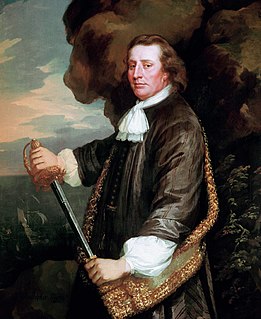
Vice Admiral Sir Christopher Myngs was an English naval officer and privateer. He came of a Norfolk family and was a relative of Admiral Sir Cloudesley Shovell. Samuel Pepys' story of Myngs' humble birth, in explanation of his popularity, has now been evaluated by historians as to be mostly fictitious in nature.

Michel de Grammont was a French privateer. He was born in Paris, Kingdom of France and was lost at sea in the north-east Caribbean, April 1686. His privateer career lasted from around 1670 to 1686 during which he commanded the flagship Hardi. He primarily attacked Spanish holdings in Maracaibo, Gibraltar, Trujillo, La Guaira, Puerto Cabello, Cumana and Veracruz.

Bartholomew Sharp was an English buccaneer and privateer. His career of piracy lasted seven years (1675–1682). In the Caribbean he took several ships, and raided the Gulf of Honduras and Portobelo. He took command of an expedition into the Pacific and spent months raiding settlements on the Pacific Coast of South America including La Serena which he torched in 1680. His flagship, taken at Panama, was the Trinity.

Laurens Cornelis Boudewijn de Graaf was a Dutch pirate, mercenary, and naval officer in the service of the French colony of Saint-Domingue during the late 17th and early 18th century.
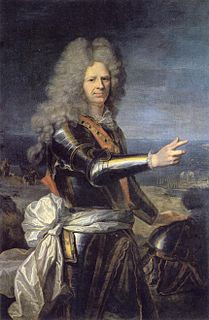
Jean-Baptiste du Casse was a French privateer, admiral, and colonial administrator who served throughout the Atlantic World during the 17th and 18th centuries. Likely born 2 August 1646 in Saubusse, near Pau (Béarn), to a Huguenot family, du Casse joined the French merchant marine and served in the East India Company and the slave-trading Compagnie du Sénégal. Later, he joined the French Navy and took part in several victorious expeditions during the War of the League of Augsburg in the West Indies and Spanish South America. During the War of the Spanish Succession, he participated in several key naval battles, including the Battle of Málaga and the siege of Barcelona. For his service, he was made a knight of the Order of the Golden Fleece by King Philip V of Spain. In the midst of these wars, he was Governor of the colony of Saint-Domingue from 1691-1703. He ended his military career at the rank of Lieutenant General of the naval forces and Commander of the Royal and Military Order of Saint Louis. He died on 25 June 1715 in Bourbon-l'Archambault, Auvergne.
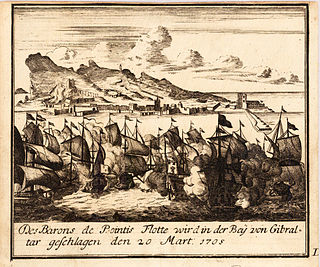
Bernard Desjean, Baron de Pointis was a French admiral and privateer.
Vice Admiral John Nevell, Neville, Nevill or Nevil,, was an officer in the Royal Navy. He is best known for the failed attempt to intercept the treasure-laden fleet of Pointis after the raid on Cartagena in 1697. He died later that year in Virginia from yellow fever.
The Capture of the galleon San Joaquin or the Battle of Cartagena was a naval engagement that took place off the coast near Cartagena. It involved five British ships of the line against the Spanish galleon San Joaquin and a smaller ship. After an action lasting barely an hour the Spanish ship surrendered. The galleon had fought in the previous encounter during Wager's Action nearly three years earlier but had just barely escaped capture.

The Sack of Campeche was a 1663 raid by pirates led by Christopher Myngs and Edward Mansvelt which became a model for later coastal pirate raids of the buccaneering era.
Sancho Jimeno was a governor of Cartagena, Colombia, between 1693 and 1695 and later, lord of the Castle of San Luis in the island of Tierrabomba, fort that was defended by him during the Raid of Cartagena in 1697. After the escape of Governor Diego de los Rios, Don Sancho was called to govern Cartagena between 1698 and 1699.
Jean Charpin was a French pirate and buccaneer active in the Caribbean and off the coast of Africa. He is best known for sailing alongside Jean-Baptiste du Casse as well as for his Articles, or “Pirate Code.”
Charles de Courbon, comte de Blénac was governor general of the French Antilles three times in the 17th century. He was an experienced soldier and fought for the king during the Fronde before becoming a naval captain. Towards the end of the Franco-Dutch War he led the land forces that took Tobago from the Dutch before taking command of the French Antilles. During the Nine Years' War he was active in the struggle with the English and Dutch in the Windward Islands. He captured Sint Eustatius and Saint Kitts, and defended Martinique against a large English expedition in 1693.














